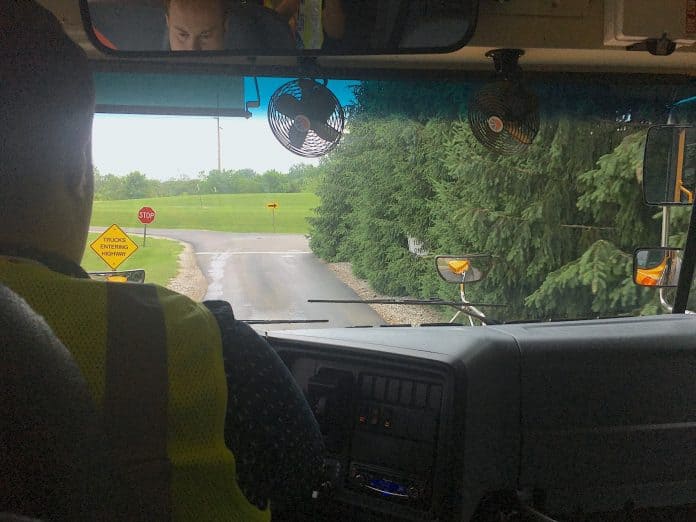A recent School Transportation News webinar made the case for technology as it can help make school bus routing easier for transportation staff and safer for students.
Buttons Cheeley, a customer success specialist with webinar sponsor TransACT, noted on Wednesday that districts are struggling with driver shortages exacerbated by COVID-19. A smooth routing system, she said, helps operations run smoothly and keeps drivers happy.
“If your routes aren’t as efficient as they could be, you’re not maximizing driver productivity,” she declared.
Related: Chicago School Bus Driver Shortage Worries Parents as School Startup Looms
Related: Ease Your Staffing Shortages
Related: Driver Shortage Forces Rotating School Bus Service at Alaska’s Largest District
Related: Equity, Diversity and Inclusion: A Plan for Improved Staff Recruitment, Retention
Strong mapping technology is also important to allow drivers to always know where they are going and provide dispatchers with the most updated information to provide parents, noted Kathryn Johnson, also a customer success specialist for TransACT. Manual routing does not allow for quick updates.
School districts are also being asked to improve the efficiency of their school bus routes due to budget concerns. Johnson recounted the example of a school district that needed to pull transportation-related reports for the state, a case where a digital system came in extremely handy.
“Transportation is affecting more of the school district these days,” Johnson commented.
Digital routing technology is also crucial for substitute school bus drivers to obtain the correct information about an area they may not be familiar with, Cheely said. Mapping obstacles like railroad crossings also saves time on a school bus route. In rural areas like the Navajo Nation in northwest New Mexico that do not have an exact street address, TransACT’s routing technology TravelTracker allows a pin to be dropped on a student’s home location.
Parents have come to expect frequent communication from student transportation departments, and digital messaging is now preferred to a manual, paper-based system, Cheely said.
Sam Caoili, a sales representative for TravelTracker, added that routing technology is also preferable for school bus drivers, who can more easily access the most updated information on their student riders.
Related: ‘Rising Star’ Talks Trial and Error of Chicago School Bus Routing
Related: Nevada School District Reduces General Education Routes Amid Bus Driver Shortage
Related: (STN Podcast E129) How Do We Do This? Recognizing School Bus Challenges & Solving With Technology
Related: Technology Abounds, But What Are You Going to Do With It?
“If you could minimize or optimize the distribution of your stops, what would that mean in terms of your cost savings?” Johnson asked the attendees.
She conducted a live demo of TravelTracker that showcased suggested changes to a route that had been built in a less than efficient way. The “sandbox” feature allows routing staff to play with potential routes, change various filters, and add different parameters before it creates the most efficient route options.
Page 165 of the National School Bus Specifications and Procedures manual on “Operations” recommends that student transporters periodically review routes and bus stops, to identify “factors that might indicate the need for a route change.” A staff member may perform a “dry run” of the route in the same bus that will be used in actual operations. GPS systems may also be used for verification and comparative data.
If a district uses driver tablets or GPS on its buses, office staff can track vehicle progress along the routes. Drivers can receive turn-by-turn directions and scan students on board as well, she added.
TravelTracker’s street view integrated with Google Maps allows transportation staff to check the safety of all stops without having to drive the entire route. In responding to an attendee question, Johnson said that TravelTracker staff can assist with making map changes that may not be reflected on Google Maps yet.
In answering an attendee question on delineating a cul-de-sac versus a driveway, moving stops and marking them accurately helps to create accurate routes and prevent buses from driving down the wrong roads, Johnson stated.














